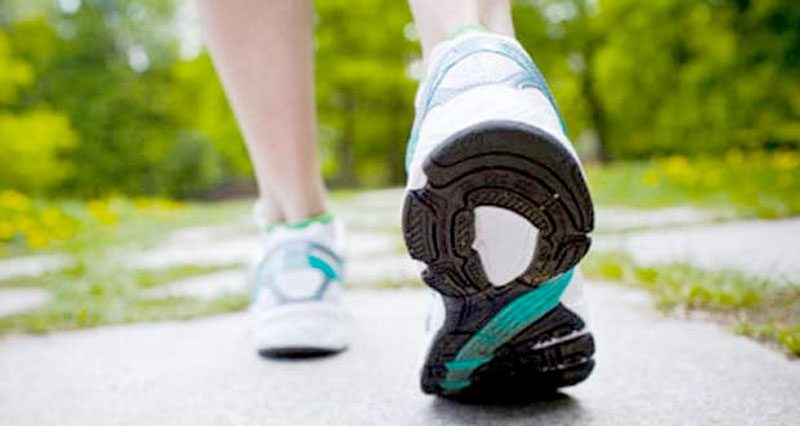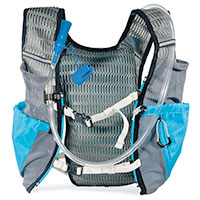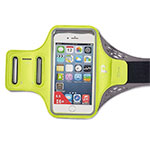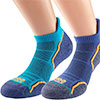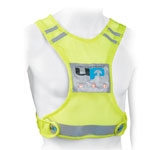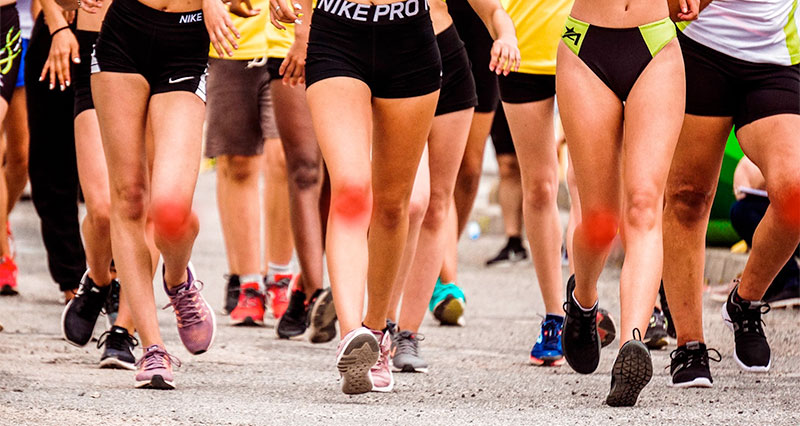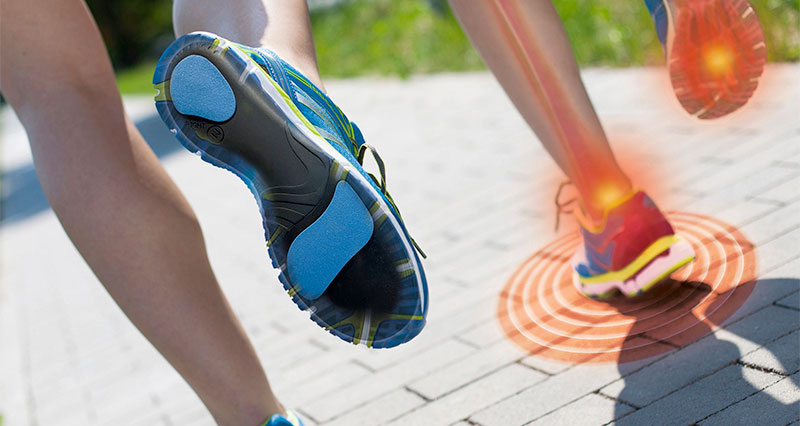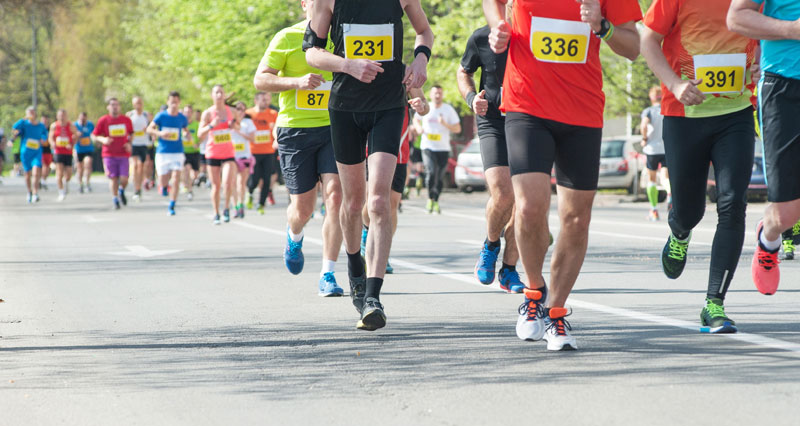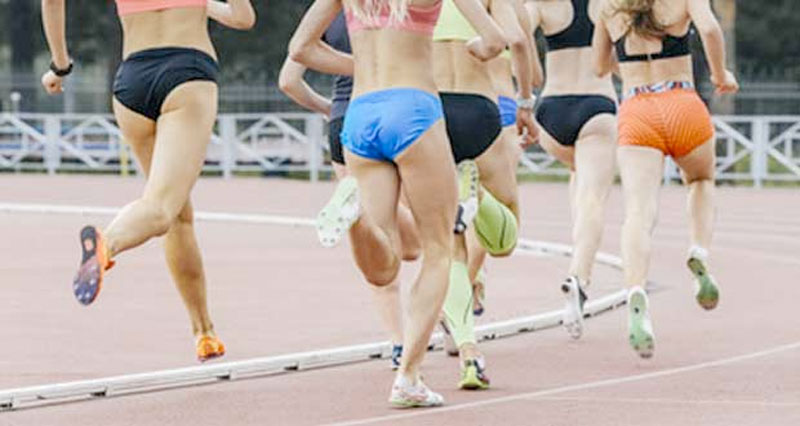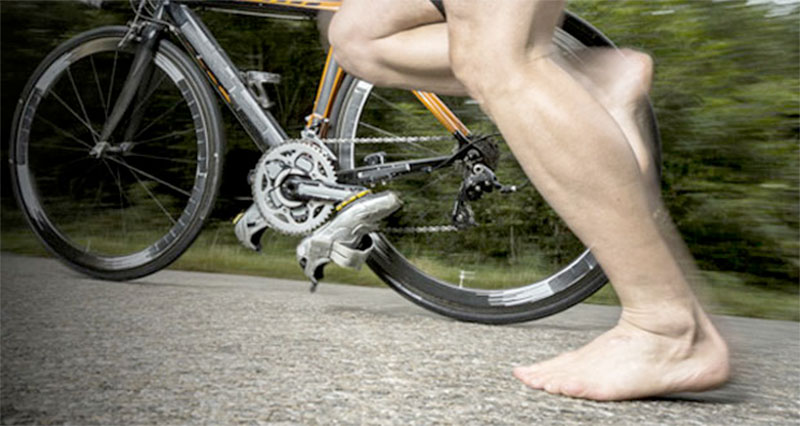Choosing running shoes, as every runner knows, is fundamental to any training regime and subsequent competitive performance. For runners, selecting a new set of high-performing running shoes is a significant investment.
Medically reviewed by Dr. Chaminda Goonetilleke, 20th Jan. 2022
Whilst it is easy to rely on a trusty old pair of running trainers, incorrect footwear significantly increases your risk of injury. Taking the effort to be expertly assessed and fitted for the correct shoe, is a wise investment for both your health and performance.
Running shoes & foot types
The right shoes for one person, will more than likely not be the right shoes for someone else! There are many different shoe manufacturers out there, with many different models. How do you know which one is right for you? Well, the most important thing is to know what kind of runner you are and what foot type you have.
When it comes to buying running shoes, you will no doubt hear the words pronation and supination. These are natural movements of the foot, which everyone does to some extent when they run and walk. The problem comes when the foot over-pronates, or over-supinates (sometimes known as under-pronates).
Overpronators
Pronation is where the arch of the foot flattens and the foot rolls inwards as you walk or run. Over-pronation means that too much of this motion occurs.
Excessive pronation also causes an excessive inward rotation of the lower leg, knee, and even upper leg
possibly causing overuse symptoms and injuries such as Calf pain when running, Achilles tendinopathies, plantar fasciitis, and shin splints.
Read more on overpronation.
Supinators
Supination is the opposite movement of pronation, causing the arch to rise and the foot to roll outwards. Over-supination can also cause injuries, mostly because this causes the foot to be very rigid and so lacking in shock-absorbing capabilities.
When buying running shoes you need to determine what happens at your feet when you run. There are many ways of doing this, but gait analysis is the best way. This involves a trained individual observing your feet and how you move.
So, now you know what foot type you have, but where does this come in when buying your running shoes? Well, different shoes are available to meet the requirements of different runners.
Types of Running Shoes
Motion-control shoes – are designed for people who overpronate. They are heavier and have rigid arch support to help decrease the movement of the foot.
Cushioned Shoes – cushioned running shoes are designed for the runner with a neutral foot. This means they do not excessively pronate or supinate. These shoes provide a mix of arch support and cushioning.
Stability shoes – are designed for people who oversupinate, as they provide the extra cushioning and shock absorbing that this particularly rigid foot requires.
Ever wondered what makes a shoe the correct shoe for you? What affects your personal requirements, and what should you be specifically seeking when investing in the perfect kit? We spoke with running shoe expert Neil Fetherby from Sportlink Running & Fitness about the importance of correctly selecting good running shoes.
Why is gait analysis important?
Gait analysis provides runners with important information about their running style. This helps and advises each person to select the correct type of shoe.
Whilst running we can take well over one hundred strides per minute at a force equal to approximately three times our own body weight with each stride.
Long-distance runners are more likely to land on the outside area of the heel. The foot then rolls inward and forward (pronation). This is a natural movement whereby the foot distributes and disperses the impact forces.
With a high degree of people, signs of over moderate to excessive rolling inwards occurs where the foot rolls inward too far. This causes the arch to collapse under the pressure of the impact forces.
This is termed overpronation. Sometimes and particularly if the shoe is too soft this movement is exaggerated and caused by the shoe itself. Barefoot gait analysis will accurately measure the natural degree of foot pronation along with leg and body movements. The correct footwear can then be advised for each person. When overpronation is diagnosed, it is advisable to wear shoes that offer support along the medial section of the shoe.
However some shoes offer more support than others and whilst it is advisable to wear shoes that counteract inward rolling, it is important to have an understanding of the levels of overpronation hence why Video Gait Analysis is important. All our staff at Sportlink have qualifications whereby they have the knowledge, experience, and background to accurately assess each individual.
We also take into consideration each person, body shape, history of running, and injuries. Underpronation (Supination) of the foot is when the feet don’t roll in enough i.e. too much lateral movement upon the foot making contact with the ground. This type of runner will obviously require neutral-type running shoes with the emphasis being on cushioning and shock absorption as opposed to that of shock absorption and medial support.
What else should I consider when buying running shoes?
That they are the right ones for you – considering biomechanics, terrain, and the nature of your running training schedule. The most important box to tick is that of comfort. It is important to tick all the boxes by way of ensuring the shoe offers plenty of shock absorption, cushioning, and pronation support if required.
Of course, there are other things to consider when buying a running shoe. Width, fit, and comfort are probably the most important. The general advice is to buy a pair of shoes half a size larger than your normal shoe size to allow the foot to move. However, this will vary slightly as sizes are different from one manufacturer to another.
Similarly, some manufacturers produce wider shoes than others and so if you know you have a wide foot, make sure you have enough room. Try lots of different brands and choose the best fit. Often, when you have found the right shoe for you, you will stick with this brand in the future!
Once you have purchased a pair of shoes that have been recommended for your specific running needs, make sure that it is also the shoe of your choice. If it’s not comfortable then say so before buying as who wants to run mile after mile in a shoe that doesn’t feel right?
How often should running shoes be replaced?
The rule of thumb is usually approximately 500 miles, but that is just a rough guide. Needless to say that someone who weighs 15 stone is going to put more pressure on the midsole than someone who weighs 8 stone. With each stride there is approximately three times your body weight being absorbed through the midsole. The heavier person is going to break down the cushioning and shock absorption properties much quicker.
The foams used can also differ particularly with some of the more lightweight and lower-budget shoes. I always liken it to having a Yorkie chocolate bar in one hand and an Aero chocolate bar in the other. They may look similar on the outside, but when you cut them in half the Aero bar is light and fluffy and the Yorkie far more dense which of course will last longer.
At the end of the day, you will usually know – i.e. when your current running shoes suddenly feel flat and hard when training. Something else which confuses some novice runners is the limited wear on the outer sole which lasts far longer than the midsole. If the outer sole has worn out then the midsole is normally long past its best-before date.
External links:
Neil Fetherby is a running expert and founder of SportLink Running and Fitness. Neil previously represented England and Great Britain as a competing athlete.
Buy Men’s running shoes and Women’s running shoes at Sportlink.co.uk (UK).
